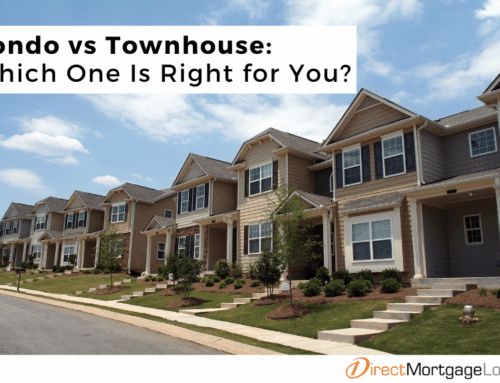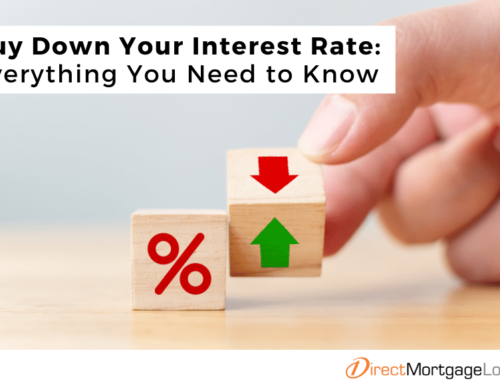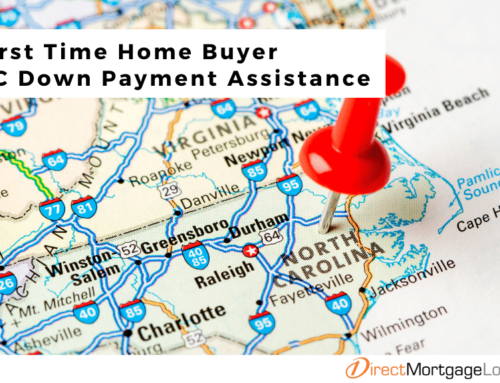Before diving into the details of the Home Possible loan, it’s important to understand the broader purpose behind this program. Homeownership is one of the most significant steps many people will take toward financial stability and long-term wealth-building. However, traditional mortgage requirements—like large down payments and strict credit standards—can be challenging for low- to moderate-income buyers. That’s where Freddie Mac’s Home Possible loan steps in. Home Possible is designed to bridge that gap, making homeownership more attainable for people who might otherwise be left out of the market.
Subscribe to our blog to receive notifications of posts that interest you!
What is the Freddie Mac home possible loan?
If you’re looking for an affordable path to homeownership, Freddie Mac’s Home Possible loan could be the solution that opens the door. This loan program is designed to support low- to moderate-income borrowers, especially those who might not have a large down payment saved or who are buying a home for the first time. With flexible credit requirements and the option for a down payment as low as 3%, Home Possible makes homeownership more accessible to those who qualify.
Home Possible also stands out by offering greater flexibility in how you fund your home purchase. Whether you’re receiving help from a family member, leveraging local grants, or contributing sweat equity, Home Possible is built to meet borrowers where they are financially.
How does a Freddie Mac Home Possible loan work?
The Freddie Mac Home Possible loan works similarly to a conventional mortgage but comes with added benefits for eligible borrowers. This loan product allows for a reduced down payment, offers more flexible sources for the down payment (including gifts and grants), and often comes with lower mortgage insurance costs. Home Possible loans can be used to purchase a primary residence or to refinance an existing mortgage.
One of the standout features of Home Possible is its flexibility. Borrowers could use sweat equity to meet some or all of the down payment and closing costs, and income from non-occupant borrowers or boarders can be considered in the qualification process. This means borrowers aren’t limited to only their own income when applying—they can broaden their support system to meet the loan’s eligibility criteria.
Home Possible vs HomeReady
While both Home Possible (offered by Freddie Mac) and HomeReady (offered by Fannie Mae) target similar borrowers, there are a few differences to note:
- Income Limits: Both programs have income limits, but they may vary by location. Home Possible caps income at 80% of the area median income (AMI), while HomeReady allows for slightly different thresholds in certain high-cost areas.
- Occupancy and Co-Borrower Guidelines: Home Possible allows non-occupant co-borrowers (like a parent or relative) to help the borrower qualify. This can be a major advantage for younger or first time buyers who are getting help from family. In contrast, HomeReady generally requires that all borrowers live in the home.
- Homeownership Education: Both programs require homebuyer education for first-time buyers. This ensures borrowers are well-informed about the responsibilities of owning and maintaining a home and managing a mortgage. The course typically covers budgeting, understanding mortgage terms, avoiding common pitfalls, and preparing for the long-term financial commitment of owning a home. By completing the course, buyers can enter the market with greater confidence and knowledge, which is especially helpful for those purchasing their first property.
What are the benefits of the Home Possible program?
Freddie Mac’s Home Possible loan program offers numerous benefits that make it easier for qualified borrowers to purchase a home. Designed with flexibility in mind, the program helps bridge financial gaps for buyers who might otherwise struggle to qualify for a conventional mortgage. Whether you’re facing hurdles like a small savings account, relying on alternative sources of income, or needing help from a co-borrower, Home Possible provides a pathway that accommodates diverse financial situations. Here are some of the key features that set this program apart:
One of the most significant benefits is the low 3% down payment requirement. Compared to traditional mortgage options that may require up to 20% down, this drastically reduces the upfront cost of purchasing a home. It opens the door to homeownership for many who might not have extensive savings.
Additionally, the program offers reduced mortgage insurance premiums, which can help keep monthly payments lower and more manageable. This can make a substantial difference in affordability over the life of the loan.
Another advantage is the flexibility in acceptable down payment sources. Borrowers could use gifts from family members, employer-sponsored assistance programs, grants from state or local agencies, or even sweat equity to meet the requirement. This range of options helps borrowers who may not have traditional financial support.
The Home Possible program also offers non-occupant co-borrower options. Family members who won’t live in the home could still help a borrower qualify by contributing income to the application. This can be especially useful for younger buyers who are early in their careers or for those with fluctuating income streams, as the additional income support can improve debt-to-income ratios and overall loan eligibility. It’s a way to enhance borrowing power without requiring the co-borrower to reside in the property, making the program more accessible for multigenerational families or supportive relatives.
Rental income flexibility is another perk of choosing this program. In some cases, income from boarders or roommates can be factored in, expanding borrowing power. This is particularly useful for buyers who may be sharing living expenses or planning to rent out a portion of their home. Including this additional income source can increase your qualifying income, making it easier to meet debt-to-income requirements and qualify for a higher loan amount. It also adds another layer of flexibility for buyers who need a more creative approach to meeting their financial requirements.
Support for low- to moderate-income buyers is also a plus. This program is built specifically to make homeownership possible for those with moderate incomes who might otherwise be sidelined.
These features combine to make the Home Possible program one of the most accessible affordable lending options available.
Freddie Mac Home Possible: How To Qualify
To qualify for the Home Possible program, there are several key criteria that borrowers must meet. First, income eligibility plays a central role. Your total household income must not exceed 80% of the Area Median Income (AMI) for the property’s location. This requirement ensures that the program remains focused on helping low- to moderate-income families access homeownership.
The property itself must be a one- to four-unit primary residence. This means that the borrower must plan to live in the home as their main residence, and investment or vacation properties are not eligible under this program. This focus on owner-occupied homes aligns with the mission of promoting stable, long-term housing solutions.
Creditworthiness is another important factor. Most lenders require a minimum credit score of 620 or higher to qualify for a Home Possible loan. Borrowers with higher credit scores may benefit from better loan terms, including lower interest rates or more flexible underwriting guidelines.
In terms of occupancy, at least one borrower must intend to live in the home. This occupancy requirement reinforces the program’s goal of creating sustainable homeownership for the individuals or families who are actively residing in the property.
Lastly, if you’re a first-time homebuyer, you’ll likely need to complete a homebuyer education course from an approved provider. This course is designed to prepare you for the responsibilities that come with owning and maintaining a home, including budgeting, understanding loan terms, and planning for long-term financial stability.
Direct Mortgage Loans can help you determine if you’re eligible for Freddie Mac Home Possible and walk you through the full qualification process.
Freddie Mac Home Possible Income Limits
Income limits are a central part of qualifying for the Home Possible loan. To be eligible, your income must not exceed 80% of the area median income (AMI) for the location of the home you want to buy. These limits vary depending on geographic location and can change periodically.
You can use tools like the Freddie Mac Income and Property Eligibility Tool to review specific limits in your area. A loan officer at Direct Mortgage Loans can also help you verify your eligibility based on your location and household income, ensuring no step is missed.
What is the minimum down payment for a Freddie Mac Home Possible loan?
The minimum down payment required for a Freddie Mac Home Possible loan is just 3% of the home’s purchase price. This makes it one of the most accessible low down payment options for eligible buyers.
Unlike other loans, where you may need to save up thousands more, this program allows borrowers to use various sources to meet the down payment requirement, such as:
- Gift funds from family members
- Employer-sponsored assistance programs
- Grants or subsidies from local or state housing agencies
- Sweat equity contributions in some situations
All of these flexible methods to supply the down payment make Home Possible particularly useful for first time buyers who are long on ambition but short on upfront cash.
Should I get a Freddie Mac Home Possible loan?
If you’re a first time buyer or someone with a moderate income looking for a more affordable way to buy a home, the Home Possible loan could be a smart option. Here are a few situations where this loan might be right for you:
- You have limited savings for a down payment: The 3% requirement means you don’t need to wait years to save up for a full 20% down payment.
- You need flexible income sources to qualify: Whether it’s boarder income or help from a non-occupant co-borrower, Home Possible allows you to count more income sources toward your approval.
- You’re buying a home in an eligible low- to moderate-income area: The program is designed to support communities that benefit most from homeownership opportunities.
- You want a conventional loan with more manageable costs: With reduced mortgage insurance and competitive terms, Home Possible combines accessibility with affordability.
However, it’s important to compare loan options to make the best financial decision. Direct Mortgage Loans can help you weigh the pros and cons and determine the right fit for your goals.
How To Apply For Freddie Mac Home Possible Loan
Applying for the Home Possible loan starts with choosing a lender like Direct Mortgage Loans—one that understands the nuances of affordable lending programs and can offer personalized support throughout your journey. Whether you’re a first-time homebuyer or someone looking for more accessible loan options, working with an experienced team ensures your path to homeownership is guided by clarity and confidence. Here’s a step-by-step overview:
- Prequalification – Speak with a loan officer to understand your eligibility and how much home you can afford. This initial step helps you set a realistic homebuying budget.
- Homebuyer Education – If you’re a first time homebuyer, complete an approved education course that will provide you the tools to manage your mortgage and home expenses successfully.
- Additionally, Direct Mortgage Loans offers a homebuyer guide to walk you through every step of the homebuying journey.
- Application Submission – Provide necessary documents including income verification, bank statements, and credit history. This step helps your lender evaluate your financial readiness and assess your ability to repay the loan. You may also be asked to submit documentation related to employment history, rental history, and any additional assets or liabilities. Being thorough and organized with your paperwork can help streamline the approval process and avoid unnecessary delays.
- Loan Processing & Underwriting – Your lender will review all documents, verify information, and order an appraisal to confirm the home’s value. This phase also includes evaluating your credit profile, verifying employment, and ensuring all loan conditions are met. The underwriter’s role is to assess risk and confirm that the loan aligns with Freddie Mac guidelines. While this step may involve some back-and-forth requests for additional documentation, working closely with your lender can help streamline the process and keep everything moving toward a successful closing.
- Closing – Once approved, you’ll attend your closing appointment to sign final paperwork and officially become a homeowner. During this final step, you’ll carefully review all legal documents—including your loan agreement, closing disclosure, and title paperwork—before signing. Representatives from your lender, title company, and possibly your real estate agent may be present to ensure everything is accurate and complete. Once signed and funds are transferred, you’ll receive the keys to your new home, officially marking the start of your journey as a homeowner.
Throughout the process, Direct Mortgage Loans serves as a reliable partner—offering step-by-step guidance, timely communication, and personalized support to help you navigate everything from prequalification to closing with confidence. Their experienced team is committed to making your homebuying journey as smooth and stress-free as possible.
How to find Freddie Mac Home Possible Lenders Near Me?
To find lenders who offer Freddie Mac Home Possible loans, it’s best to start with mortgage professionals who are experienced with affordable lending programs. Direct Mortgage Loans is proud to offer Home Possible as a loan program and can help guide you every step of the way—from prequalification to closing.
By connecting with a local loan officer through Direct Mortgage Loans, you’ll gain access to expert guidance tailored specifically to your financial needs. Their personalized approach and deep experience with affordable lending options like Home Possible help simplify the homebuying journey and give you the confidence to move forward.
Freddie Mac Home Possible FAQ’s
Is Freddie Mac Home Possible for first time home buyers?
Freddie Mac Home Possible could be a good fit for first time buyers, but the program is also available for repeat buyers as long as income and property guidelines are met. The program is especially beneficial for those who may not have a large down payment saved or who need more flexible qualification criteria. Whether you’re just starting your homeownership journey or re-entering the market after a break, Home Possible could offer a supportive path forward.
Does Freddie Mac Home Possible require homebuyer education
Yes. If all borrowers are first time buyers, at least one must complete a homeownership education course from an approved provider. This course—typically available online—covers key topics such as budgeting, mortgage terms, and ongoing responsibilities of homeownership. Home Possible is designed to help buyers feel more confident and prepared for both the financial and practical aspects of owning a home.
Can you put 20% down on Home Possible?
Yes, you could choose to put 20% or more down on a Home Possible loan. While the program is built for low down payment flexibility, putting more money down could reduce your overall loan amount, lower your monthly payments, and potentially eliminate the need for private mortgage insurance (PMI). A larger down payment also signals financial strength to lenders, which may help you qualify for better loan terms.
What is the LTV for Freddie Mac Home Possible?
The maximum loan-to-value (LTV) ratio for Home Possible is 97% for one-unit properties, meaning borrowers can finance up to 97% of the home’s appraised value. This makes it especially helpful for those who have limited savings but a steady income. Lower LTV ratios may be required for certain property types or borrower situations, but a 97% LTV provides a lot of flexibility for eligible buyers.
What is the maximum DTI for Freddie Mac Home Possible?
The maximum debt-to-income (DTI) ratio generally increases up to 45%, though in some cases it may be higher if there are strong compensating factors like a higher credit score or additional savings. DTI plays a critical role in determining your borrowing capacity, as it reflects how much of your income goes toward existing debts. Understanding your DTI helps ensure that your mortgage payments remain affordable long term.
Eligibility and approval is subject to completion of an application and verification of home ownership, occupancy, title, income, employment, credit, home value, collateral and underwriting requirements. Direct Mortgage Loans, LLC NMLS ID# is 832799 (www.nmlsconsumeraccess.com). Direct Mortgage Loans, LLC office is located at 11011 McCormick Rd Ste 400, Hunt Valley, MD 21031.






Leave A Comment
You must be logged in to post a comment.